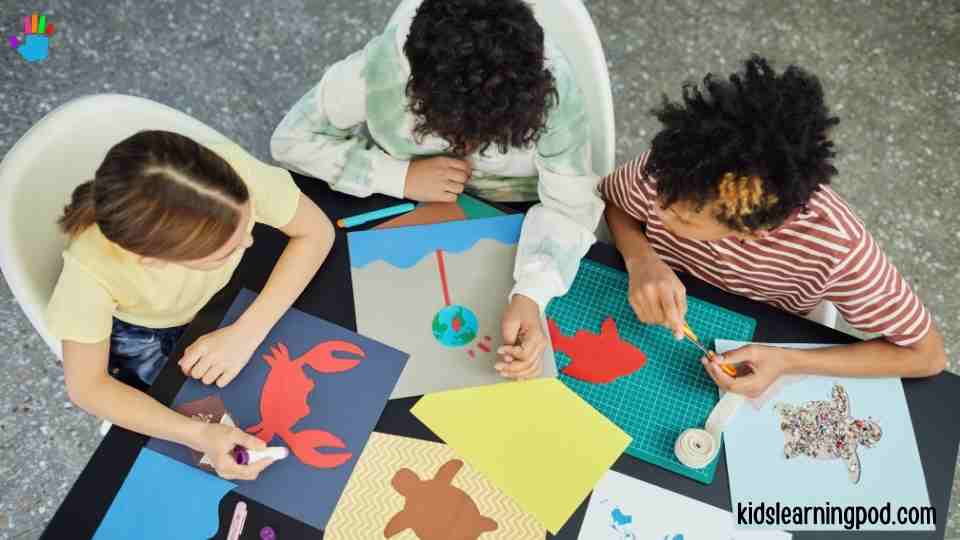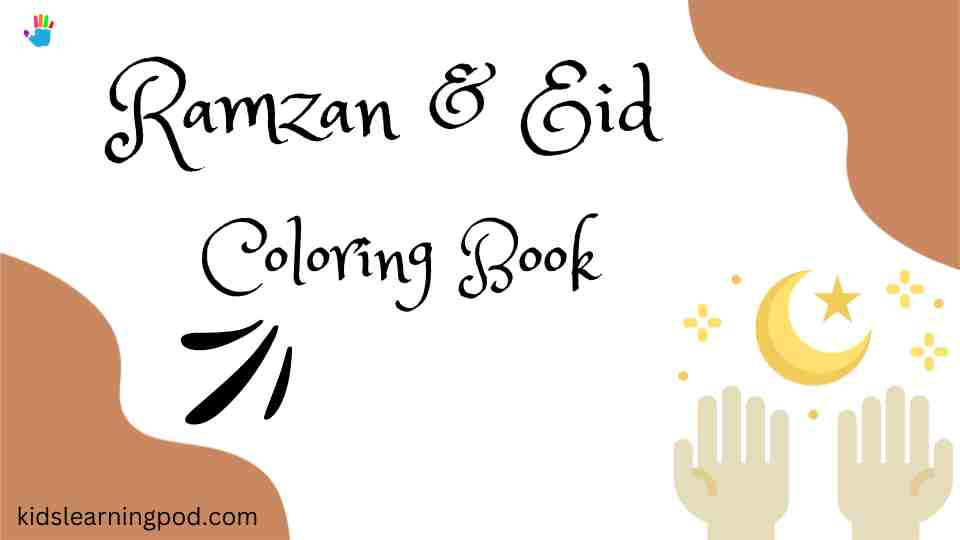Eid is a time of joy, celebration, and togetherness. It’s a period when families and communities come together to honor tradition, share meals, and exchange gifts. Among these cherished customs, exchanging Eid cards holds a special place. For kids, Eid cards are more than just pieces of paper—they are expressions of love, creativity, and cultural pride. In this post, we’ll explore the significance of Eid cards for kids, offer creative card-making ideas, and discuss how this simple tradition can have profound impacts on young minds.
Importance of Eid Celebrations
Eid al-Fitr and Eid al-Adha are two of the most important festivals in the Islamic calendar. They mark the end of Ramadan and the culmination of the Hajj pilgrimage, respectively. These celebrations are characterized by prayer, feasting, and giving to those in need. For kids, Eid is often associated with new clothes, delicious sweets, and the joy of receiving Eidi (gifts or money). However, the essence of Eid goes beyond these tangible pleasures. It’s about fostering a sense of community, gratitude, and cultural identity.
The Role of Eid Cards in Festivities
Eid cards play an essential role in the celebrations, especially for children. These cards serve as tokens of affection, mediums of personal expression, and tools for learning and creativity. Just like Christmas cards or birthday cards, Eid cards help kids convey their feelings and wishes to family and friends, making the festival even more special.
The Tradition of Exchanging Cards
The tradition of exchanging cards is a timeless way to spread joy and maintain connections. Eid cards, in particular, have a unique charm. They are infused with cultural motifs, Islamic symbols, and heartfelt messages that resonate deeply with recipients. For kids, creating or choosing an Eid card can be a fun and meaningful activity that enhances their understanding of the festival’s significance.
Historical Background
The practice of sending greeting cards dates back centuries, with various cultures around the world adopting the custom for different occasions. In Islamic culture, the exchange of Eid cards is a relatively modern tradition but one that has quickly gained popularity. Initially, these cards were simple, hand-drawn designs. Today, they come in various forms, from elaborate store-bought versions to digital creations.
Modern Trends
In recent years, the trend of exchanging digital Eid cards has surged, especially among tech-savvy youngsters. These digital cards offer convenience and endless customization options. Despite this shift, handmade and store-bought Eid cards continue to hold their charm, particularly for kids who enjoy the tactile experience of creating and receiving physical cards.
Why Eid Cards Are Special for Kids
Eid cards are special for kids for several reasons. They encourage creativity, build cultural awareness, and strengthen family bonds. Involving kids in the process of making or selecting Eid cards can make them feel more connected to the festival and its traditions.
Encouraging Creativity
One of the best aspects of making Eid cards is the opportunity it provides for creativity. Kids can experiment with colors, designs, and materials, allowing their imagination to run wild. This creative process is not only fun but also beneficial for their cognitive and emotional development.

Building Cultural Awareness
Creating and exchanging Eid cards can be a great way to teach kids about the cultural and religious significance of the festival. By incorporating Islamic symbols and traditional motifs, parents and teachers can help kids better understand and appreciate their heritage.
Strengthening Family Bonds
Activities like making Eid cards can bring families closer together. It provides an opportunity for parents and children to spend quality time together, working on a shared project. This collaborative effort can strengthen family bonds and create lasting memories.
Types of Eid Cards for Kids
Handmade vs. Store-bought
When it comes to Eid cards, both handmade and store-bought options have their merits. Handmade cards offer a personal touch and a unique opportunity for kids to express their creativity. On the other hand, store-bought cards can be beautifully designed and save time, especially for busy parents.
Digital Eid Cards
Digital Eid cards are becoming increasingly popular, especially in our tech-driven world. These cards can be customized with various designs, messages, and even animations. They are an excellent option for kids who enjoy using digital tools and technology.
Handmade Eid Cards
Benefits of Making Your Own Cards
Making handmade Eid cards can be a rewarding experience for kids. It allows them to personalize their greetings and add a unique touch to each card. Additionally, it offers a break from screen time and encourages hands-on creativity.
Materials Needed
To get started, you’ll need some basic materials:
- Colored paper or cardstock
- Crayons, markers, or colored pencils
- Glue, scissors, and tape
- Decorative items like stickers, glitter, and ribbons

Step-by-Step Guide to Making a Handmade Eid Card
- Choose Your Design: Decide on a theme or design for your card. It could be anything from a crescent moon and star to a mosque or colorful geometric patterns.
- Gather Materials: Collect all the necessary materials and lay them out on a flat surface.
- Create: Start drawing or cutting out shapes and designs. Use glue to attach decorative elements and write a heartfelt message inside the card.
Store-Bought Eid Cards
Advantages of Store-Bought Cards
Store-bought Eid cards offer a quick and convenient option, especially for those who may not have the time or resources to make their own. They often feature professional designs and high-quality prints that can make a strong impression.
Popular Themes and Designs
Store-bought cards come in a variety of themes and designs, from traditional Islamic art to modern, minimalist styles. Many cards also include pre-written messages, making it easier to convey your sentiments.
Digital Eid Cards
The Rise of Digital Cards
Digital cards have gained popularity due to their convenience and versatility. They can be sent instantly, saving time and postage costs. Moreover, digital cards can include interactive elements like animations and music, adding an extra layer of excitement for kids.
How to Create Digital Eid Cards
Creating a digital Eid card is simple and fun. Several online platforms and apps allow you to choose templates, customize designs, and add personalized messages. Once you’re satisfied with your creation, you can send it via email or social media.
Best Platforms for Digital Cards
Some popular platforms for creating digital Eid cards include Canva, Adobe Spark, and JibJab. These tools offer a range of templates and easy-to-use features, making it accessible even for kids.
Incorporating Educational Elements
Teaching Islamic Values
Eid cards can be a great way to teach kids about Islamic values such as kindness, generosity, and gratitude. Parents and teachers can include short messages or quotes from the Quran that resonate with these values.
Learning Arabic Words and Phrases
Another educational element to incorporate in Eid cards is Arabic words and phrases. Simple greetings like “Eid Mubarak” or “As-salamu alaykum” can help kids learn and appreciate their language.
Fun Themes and Designs for Kids
Cartoon Characters
Integrating popular cartoon characters into Eid card designs can make the activity more engaging for younger kids. Characters like Aladdin or Jasmine can add a fun twist to traditional designs.
Islamic Symbols
Symbols such as the crescent moon, star, and mosque are commonly associated with Eid. Including these elements in card designs can help reinforce cultural and religious identity.
Personalized Photos
Adding personalized photos to Eid cards can make them even more special. Kids can include pictures of themselves, their families, or memorable moments from past Eids.
Eid Card Crafting Ideas
Simple and Easy Card Ideas
For younger kids, simple and easy card ideas are ideal. They can use basic shapes, stickers, and coloring tools to create beautiful cards without getting overwhelmed.
Advanced Card Designs for Older Kids
Older kids can take on more advanced designs, such as pop-up cards or layered designs. These projects can challenge their creativity and give them a sense of accomplishment.
Organizing an Eid Card-Making Party
Planning the Event
An Eid card-making party can be a fun and festive way to celebrate the holiday. Invite friends and family over, and set up a crafting station with all the necessary materials.
Activities and Games
In addition to making cards, you can organize games and activities related to Eid. For example, a trivia quiz about the festival or a storytelling session about its origins and significance.
Sharing and Displaying Finished Cards
Once the cards are made, encourage kids to share and display their creations. You can create a display wall at home or share photos of the cards on social media to spread the joy.
Sending and Sharing Eid Cards
Mailing Physical Cards
Sending physical Eid cards by mail can add a personal touch. Kids can decorate envelopes and include a small treat or token along with the card.
Sharing Digital Cards
Digital cards can be shared easily via email or social media. This method is especially useful for reaching friends and family who live far away.
Eid Cards as Keepsakes
Preserving and Storing Cards
Eid cards can become cherished keepsakes. Teach kids how to preserve and store their cards properly, perhaps in a special box or album.
Creating an Eid Card Scrapbook
An Eid card scrapbook can be a wonderful way to keep track of the cards received each year. Kids can add notes and memories alongside the cards, creating a lasting memento of their Eid celebrations.
Encouraging Kids to Write Personal Messages
Importance of Personalized Messages
Personalized messages can make Eid cards truly special. Encourage kids to write their own messages, expressing their feelings and wishes for the recipient.
Tips for Writing Meaningful Eid Messages
Help kids brainstorm ideas for their messages. Remind them to include specific details and express gratitude and well-wishes.
Conclusion
Eid cards are more than just a festive tradition; they are a way to foster creativity, build cultural awareness, and strengthen family bonds. By engaging kids in the process of making and exchanging Eid cards, we can ensure that this beautiful tradition continues to thrive. Whether you choose to make handmade cards, opt for store-bought ones, or explore digital options, the joy and love conveyed through these simple gestures are priceless.
Kindly Allow Pop ups to let the Download Begin!

FAQs
What materials are best for making handmade Eid cards?
How can digital Eid cards be made interactive for kids?
Are there any online platforms for exchanging Eid cards?
What are some popular themes for Eid cards for kids?
How can I help my child write a meaningful Eid card message?
By embracing the tradition of Eid cards, we can help kids connect with their cultural heritage, express their creativity, and build lasting memories. Let’s keep this beautiful tradition alive and thriving for generations to come.
